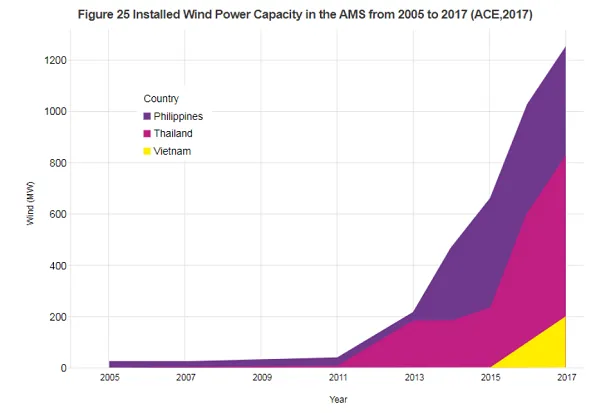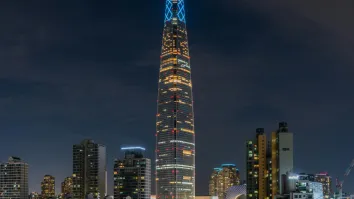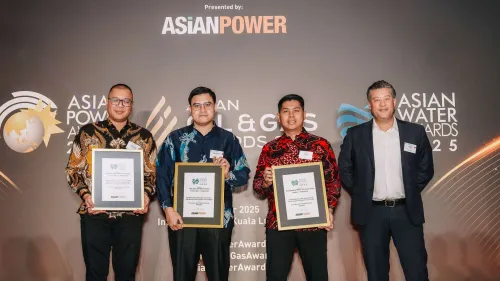
Philippines, Thailand, and Vietnam accounted for the largest wind power capacity in ASEAN
Their cumulative capacities were 427MW, 648MW, and 197MW, respectively as at end-2017.
The Philippines, Thailand, and Vietnam were found to have the largest wind power capacity amongst the 10 ASEAN member states (AMS) as at the end of 2017, the installed capacities in these three countries were 430MW, 427MW, and 159MW, respectively, according to a report published by the ASEAN Centre for Energy (ACE) and Deutsche Gesellschaft für Internationale Zusammenarbeit (GIZ) GmbH.
With a large capacity of 218MW added to its existing fleet, Thailand became the ASEAN country with the most wind power capacity. At the end of 2017, the cumulative capacities in Thailand, the Philippines, and Vietnam were 648MW, 427MW, and 197MW, respectively.
“However, other AMS such as Indonesia are currently developing their own wind power plants. Indonesia is still finalising a 75MW wind power plant in Sulawesi. It will become the largest single wind power plant in the ASEAN,” the report’s authors noted.
ACE and GIZ’s report analysed eight wind power projects in the AMS, of which three were located in the Philippines, four in Thailand, and one in Vietnam. The average capacity factor for the sample project stood at 22.14%. Along with solar PV, as a variable renewable energy (RE) technology, wind is expected to have a capacity factor of around 30%, they added.

With regards to costs, the report noted that there are two main cost items for wind power plants, comprising of installation costs, and operating and maintenance costs. Thailand’s projects had the highest and lowest installation costs of $2,708 /kW and $1,518 kW, respectively, compared to the average installation cost of $2,321/kW found.
According to the report, the two largest shares of the cost breakdown were equipment costs (74.50%) and balance of plant costs (16.25%). The three next largest shares were equipment costs (64.45%), transportation/land costs (17.29%), and grid connection system costs (14.78%). The cost breakdowns for wind power projects were taken from two samples in Thailand and the Philippines that had each had a capacity of 30MW.
Additionally, the average operating and maintenance (O&M) costs were found to account for 1.03% of installation costs. “Compared to the other technologies, the O&M costs for wind power were relatively cheaper as there are no fuel costs,” the authors explained.
Meanwhile, sensitivity analysis indicated that capital costs, capacity factor and discount rate were the key parameters impacting the levelised cost of electricity (LCOE) of wind power plants.
“The most impactful option to decrease the LCOE of wind power plants was to reduce capital costs. A 50% decrease in capital costs resulted in a 44% increase in the LCOE to become $0.08/kWh. In the meantime, if the capacity factor increased by 50%, the LCOE declined by 33% to become $0.1/kWh,” the authors noted. “Another option was to decrease the discount rate by 50%, from 10% to 5% which could reduce the LCOE by 31%.”



















 Advertise
Advertise






